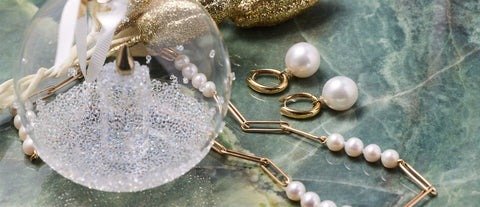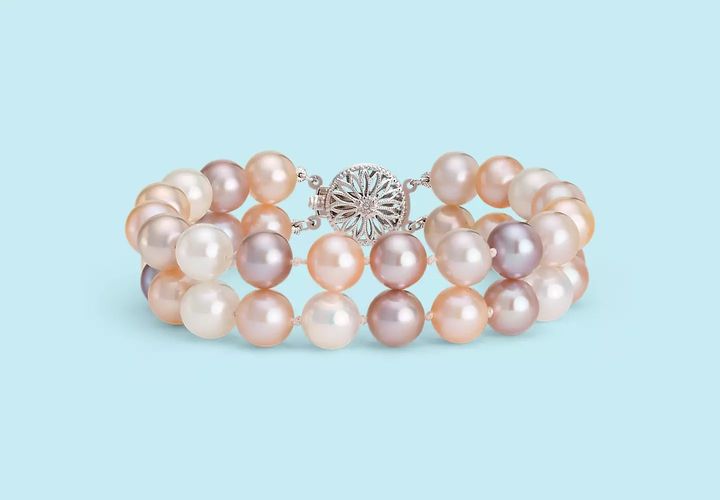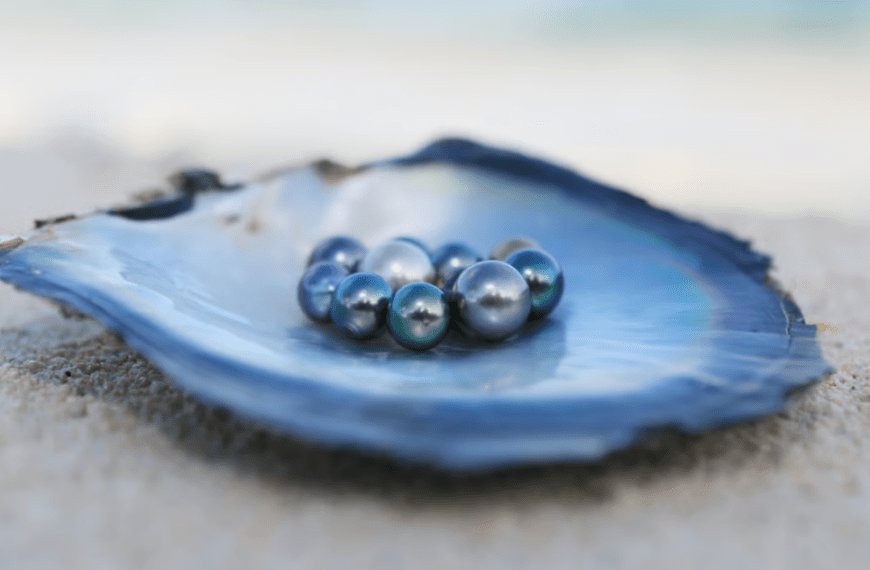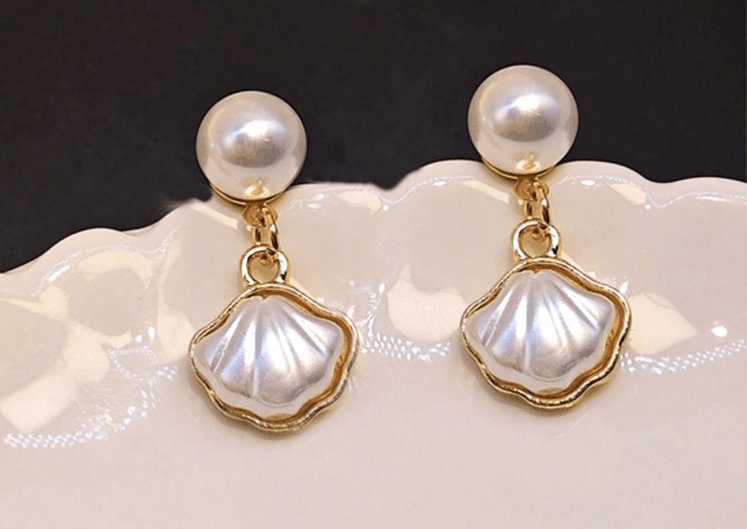Diamonds generally offer better long-term investment potential compared to pearls. Pearls, while beautiful, often depreciate over time.
Investing in gemstone jewelry requires careful consideration. Diamonds have a strong market presence, historical value, and rarity. They often appreciate over time, making them a solid investment choice. Pearls, although stunning, don’t hold their value as consistently. They can be more susceptible to wear and environmental factors.
Diamonds are durable and highly sought after in various industries, including jewelry and technology. The global market for diamonds remains robust, ensuring liquidity and demand. On the other hand, pearls are best appreciated for their aesthetic and sentimental value rather than their investment potential. Then again, we still love pearls!
Historical Significance
Understanding the historical significance of pearls and diamonds can help in making that choice. Both gems have storied pasts filled with grandeur and mystery. This article delves into the historical importance of these precious items!
Pearls In History
Pearls have been cherished for thousands of years. Ancient cultures, such as the Chinese, prized pearls. They were symbols of wealth and status. In ancient Egypt, pearls were so valuable they were buried with pharaohs. During the Roman Empire, pearls were a sign of nobility. Royalty adorned themselves with pearls for special occasions. The Middle Ages saw pearls as symbols of purity. They were often used in religious artifacts.
In the 16th century, pearls were so valuable they were called “the Queen of Gems.” The age of exploration increased their desirability. Pearls from the Americas became highly sought after. Over time, the development of cultured pearls democratized their availability. This made them accessible to a broader audience. Yet, natural pearls remain rare and valuable.
Diamonds In History
Diamonds have a history of being symbols of strength and invincibility. Ancient civilizations, like the Greeks, believed diamonds were splinters of stars. In ancient India, diamonds were used as religious icons. They were believed to protect from evil and bring good fortune.
During the Middle Ages, diamonds were reserved for royalty and the elite. The discovery of diamond mines in Brazil in the 18th century changed the market. Diamonds became more accessible. The 19th century saw the rise of South African diamond mines. This revolutionized diamond availability and pricing. Today, diamonds are synonymous with love and commitment. They are the ultimate symbol of eternity.
Both pearls and diamonds hold significant historical importance. Their rich histories add to their allure as investment options.
Market Value
The market value of pearls and diamonds can vary significantly. Each gemstone has its unique attributes influencing its price. Understanding the current market value helps in making an informed investment decision.
Current Pearl Prices
The price of pearls depends on several factors:
- Type: Natural, cultured, freshwater, and saltwater pearls.
- Size: Larger pearls usually cost more.
- Luster: High luster pearls have higher value.
- Shape: Round pearls are the most expensive.
Here is a general overview of current pearl prices:
| Type of Pearl | Price Range (per carat) |
|---|---|
| Freshwater Pearls | $20 – $50 |
| Saltwater Pearls | $100 – $500 |
| Tahitian Pearls | $200 – $1,000 |
| South Sea Pearls | $500 – $3,000 |
Current Diamond Prices
The price of diamonds is influenced by the 4 Cs:
- Carat: Weight of the diamond.
- Cut: Quality of the diamond cut.
- Color: Degree of colorlessness.
- Clarity: Presence of internal or external flaws.
Here is a general overview of current diamond prices:
| Carat Weight | Price Range (per carat) |
|---|---|
| 0.5 carat | $1,000 – $3,000 |
| 1 carat | $4,000 – $12,000 |
| 2 carats | $15,000 – $50,000 |
| 3 carats | $50,000 – $150,000 |
Both pearls and diamonds offer unique opportunities. The choice depends on personal preference rather than market trends.
Rarity And Availability
The decision to invest in pearls or diamonds often hinges on various factors. One such critical factor is the rarity and availability of these precious gems. Understanding how rare and available pearls and diamonds are can help you make an informed decision.
Rarity Of Pearls
Pearls are unique in their formation. They are created by mollusks, which makes them organic gems. Natural pearls are rare because they occur without human intervention. Cultured pearls, produced with human aid, are more common but still not abundant.
The rarity of natural pearls increases their value significantly. They are found in the wild, often in very small quantities. The process of harvesting natural pearls is labor-intensive and time-consuming. This adds to their rarity.
On the other hand, cultured pearls are more available. They are grown in controlled environments on pearl farms. Yet, even cultured pearls require specific conditions to form. High-quality cultured pearls are still considered rare and valuable.
Rarity Of Diamonds
Diamonds are renowned for their hardness and brilliance. They are formed deep within the Earth’s mantle under extreme pressure and heat. Natural diamonds are considered rare due to the specific conditions required for their formation.
Mining diamonds is a complex and costly process. The rarity of large, high-quality diamonds enhances their value. Yet, advancements in mining technology have increased the availability of diamonds on the market.
Lab-grown diamonds are becoming more popular. They are created in controlled environments and mimic natural diamond properties. These diamonds are less rare but offer a more sustainable option.
| Aspect | Pearls | Diamonds |
|---|---|---|
| Natural Formation | Extremely Rare | Rare |
| Cultured/Lab-Grown | Common but Quality Varies | Increasingly Common |
| Mining/Harvesting Process | Labor-Intensive | Costly and Complex |
Both gems offer unique value propositions based on their rarity.
Long-term Appreciation
Investing in pearls and diamonds can be profitable. Both gems have unique values that helps make it smart investment choices.
Pearls As Investments
Pearls have charmed people for centuries. Their natural beauty attracts many collectors. But how do they fare in the long run?
Pros:
- Pearls are timeless and elegant.
- Rare pearls, like South Sea, have high value.
- Vintage pearls often appreciate over time.
Cons:
- Pearls need careful maintenance.
- They are softer than diamonds.
- Fake pearls can flood the market.
Diamonds As Investments
Diamonds symbolize status and wealth. They are known for their sparkle and durability. How do they perform as an investment?
Pros:
- Diamonds are extremely durable.
- They have a strong resale market.
- High-quality diamonds appreciate over time.
Cons:
- Initial purchase cost is high.
- Market can be volatile.
- Resale value depends on diamond quality.
| Aspect | Pearls | Diamonds |
|---|---|---|
| Durability | Less durable | Highly durable |
| Maintenance | High | Low |
| Initial Cost | Moderate | High |
| Market Value | Variable | Generally stable |
Maintenance And Care
When investing in jewelry, understanding maintenance and care is crucial. Proper care ensures your gems retain their value and beauty. This section will guide you on how to care for both pearls and diamonds.
Caring For Pearls
Pearls are delicate and need gentle care. Here’s how you can maintain them:
- Store them separately: Pearls can scratch easily. Keep them in a soft pouch.
- Avoid chemicals: Keep pearls away from perfumes and hairsprays.
- Clean gently: Use a soft cloth and mild soap. Never use harsh cleaners.
- Wear often: Pearls need moisture. Wearing them helps prevent drying out.
Caring For Diamonds
Diamonds are durable but still need proper care. Follow these steps:
- Store them separately: Diamonds can scratch other gems. Use a separate pouch.
- Avoid oils: Diamonds can attract oils from the skin. Clean them regularly.
- Use a soft brush: Clean with a soft brush and mild detergent.
- Inspect settings: Check the settings regularly. Ensure they are secure.
| Aspect | Pearls | Diamonds |
|---|---|---|
| Storage | Soft pouch | Separate pouch |
| Cleaning | Soft cloth, mild soap | Soft brush, mild detergent |
| Chemical Exposure | Avoid perfumes, hairsprays | Avoid oils, clean regularly |
| Inspection | Wear often | Check settings |
Cultural And Symbolic Value
When choosing between pearls and diamonds as an investment, understanding their cultural and symbolic value is essential. Both gemstones hold rich histories and convey different meanings in various cultures. This section will explore the cultural significance and symbolism of pearls and diamonds.
Pearls In Culture
Pearls have fascinated humans for thousands of years. In many cultures, pearls symbolize purity and innocence. Ancient Greeks believed pearls were the tears of the gods. In China, pearls represent wisdom and luck. Queens and empresses often wore pearls as a sign of power and grace.
Japanese culture sees pearls as symbols of love and protection. Brides often wear pearls on their wedding day. In the Middle Ages, only royalty and the wealthy could own pearls. This made them a symbol of social status.
Below is a table highlighting the cultural symbolism of pearls in different regions:
| Region | Symbolism |
|---|---|
| Ancient Greece | Tears of the gods |
| China | Wisdom and luck |
| Japan | Love and protection |
Diamonds In Culture
Diamonds have been admired for their brilliance and strength. In Indian culture, diamonds were believed to protect against evil. Ancient Romans thought diamonds were splinters of fallen stars. Diamonds symbolize eternal love and commitment, making them popular in engagement rings.
African cultures often view diamonds as symbols of wealth and prosperity. The discovery of diamonds in Africa changed the continent’s history. In modern Western culture, diamonds are linked with luxury and status.
Below is a table highlighting the cultural symbolism of diamonds in different regions:
| Region | Symbolism |
|---|---|
| India | Protection against evil |
| Ancient Rome | Splinters of fallen stars |
| Africa | Wealth and prosperity |
Frequently Asked Questions
Are Pearls A Good Investment?
Pearls can be a good investment, especially natural ones. Their value depends on quality, rarity, and size. Unlike diamonds, pearls are more affordable but can appreciate over time if well-maintained.
Do Diamonds Hold Their Value Better Than Pearls?
Diamonds generally hold their value better than pearls. They are more durable and less prone to damage. However, the value of diamonds also depends on factors like clarity, cut, and carat.
Which Is More Expensive, Pearls Or Diamonds?
Diamonds are typically more expensive than pearls. This is due to their rarity and the complex process of cutting and polishing. High-quality natural pearls can be costly but generally less so than diamonds.
Are Pearls Or Diamonds Easier To Sell?
Diamonds are generally easier to sell than pearls. They are more universally recognized and in higher demand. Pearls can be sold but may require specialized buyers or markets.
Conclusion
Choosing between pearls and diamonds depends on your personal preference and investment goals. Both have unique advantages and potential returns. Research market trends to make an informed decision. With careful planning, either can be a valuable addition to your portfolio. Read more articles about our favorite jewelry, pearls!




















